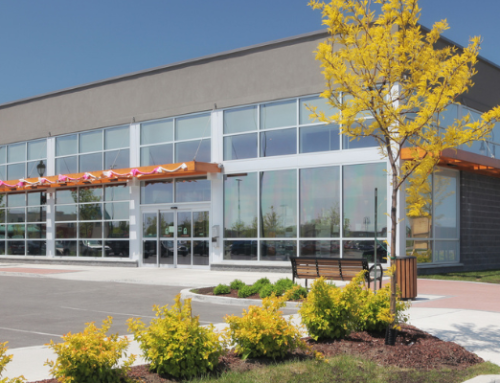By Ryan B. Paul, CPA
The real estate industry is undergoing significant change, influenced by economic trends, demographic shifts, and technological innovation. Despite uncertainties in the global economy, the U.S. maintains a resilient economic environment, with a current unemployment rate of 3.9 percent. While overall economic growth has been modest at 1.6 percent at the start of 2024, strong consumer spending patterns indicate the potential for sustained growth in the real estate sector.
Investors will find promising opportunities in various segments, particularly in multifamily dwellings, infrastructure development, and sustainable real estate practices. However, it’s important to note that leading U.S. financial regulators have raised concerns about commercial real estate, labeling it as a significant risk factor for economic stability in 2024. Key issues include rising vacancy rates, decreasing values of office properties, and the impact of persistently high interest rates.
As CRE Global Chair William McCarthy remarked, “This next year will be crucial to real estate. All eyes are on the future as we navigate these disruptions with a purpose for developing solutions.” The industry must adopt a proactive and strategic approach to overcome these challenges and capitalize on the emerging opportunities.
Key Issues for Real Estate in 2024
Remote Work
The surge in remote work has fundamentally altered the dynamics of both living and working spaces. As businesses and their employees move toward more flexible work models, there’s a noticeable uptick in demand for residential properties in suburban and rural settings rather than in traditional urban centers. This shift reflects changing preferences for larger, more versatile living spaces that can accommodate home offices and provide a higher quality of life outside of city environments.
To counteract increasing office vacancy rates, which have risen to 19.8 percent, developers are reimagining office environments to draw employees back. Enhancements range from unique amenities to hosting engaging events such as food truck days and creating outdoor seating areas. Given the persistently high vacancy rates, property owners might also consider repurposing office spaces into alternative formats like residential units, senior living facilities, healthcare centers, or mixed-use developments.
Migration and Housing Demand
With mortgage rates hovering near seven percent, there’s an increase in the demand for multifamily apartment properties and residential rentals. This situation is beneficial for investors and developers, as it leads to sustained rent growth and escalating property values. However, these economic pressures are prompting a migration, with individuals and families moving from high-cost urban centers to more affordable areas including Sun Belt cities in North Carolina.
Simultaneously, consumer preferences are evolving to favor homes that cater to the new normal of remote work. There is growing demand for properties that include dedicated office spaces, high-speed internet connectivity, and well-designed outdoor areas. Cities that can offer these features, along with affordability and easy access to major transportation hubs like airports, are becoming increasingly attractive to both residents and businesses. These changes may signal revised property valuations and the strategic redevelopment of underutilized spaces.
Sustainable and Green Building Practices
The urgency of addressing climate change has never been greater, especially following the record-breaking temperatures of 2023. The real estate sector is responding with an increased focus on sustainability. This includes integrating eco-friendly building practices and materials, adopting renewable energy sources like solar power, and enhancing indoor environmental quality. Forward-looking property owners and managers are prioritizing these aspects to meet the rising demand for green buildings, driven by both environmental concerns and ESG regulatory requirements.
Moreover, the frequency of billion-dollar climate-related disasters is escalating annually, prompting a heightened focus on constructing climate-resilient buildings and infrastructure. Strategies being adopted include the use of durable, low-carbon materials and the implementation of passive cooling techniques to reduce energy use. As the risks and costs associated with extreme climate events continue to rise, investors are increasingly conducting thorough due diligence to fully understand both the opportunities and risks associated with green investments. This comprehensive approach is likely to influence future investment decisions significantly.
The Labor Shortage
The labor shortage persists, evidenced by the Job Openings and Labor Turnover Survey (JOLTS) finding of 1.8 job openings for every unemployed individual. With the aging workforce and changing professional preferences among younger workers, the real estate sector will need to adapt their investment strategies.
Notably, nearly half of young adults express interest in skilled trades, attracted by the independence and potential for entrepreneurship. However, there is a lack of training, mentoring, and support to help interested individuals pursue these careers. This highlights a potential opportunity for the real estate sector.
The Role of Technology and the Digital Economy
Artificial intelligence (AI) and property technology (proptech) are revolutionizing the real estate sector by streamlining the buying and selling processes, enhancing property management, and improving the overall customer experience. These technologies may also be helpful in addressing the ongoing labor shortages in construction and real estate services, with more efficient project management and execution.
Moreover, the increased access to real-time data, facilitated by these technologies, is becoming indispensable for investors in a dynamic market. This access aids investors in making timely decisions about acquiring, retaining, or divesting properties, highlighting the growing importance of adopting new technologies sooner rather than later.
Economic Conditions and Market Impacts
As noted, economic factors like fluctuating interest rates and inflation are influencing market behaviors and pricing trends. Owners, investors, and developers across residential and commercial real estate markets are feeling the effects of higher capital costs and tightened lending. Yet, there’s cautious optimism as inflation rates begin to stabilize, helped by easing supply chains and the declining cost of some goods. Federal Reserve Chair Jerome Powell recently noted that he expects inflation to move down over the course of this year.
Looking Ahead
The real estate market in 2024 is characterized by a complex interplay of factors ranging from technological innovations to economic fluctuations and societal shifts. Understanding these trends is essential for stakeholders across the board—from investors and developers to buyers and policymakers—as they navigate the challenges and opportunities these trends present. Looking ahead, the flexibility to adapt and innovate will be key in leveraging the dynamics of an ever-evolving real estate landscape. For inquiries regarding the issues and trends influencing your organization’s real estate decisions, contact Ryan Paul, Partner on PBMares’ Construction & Real Estate team.





